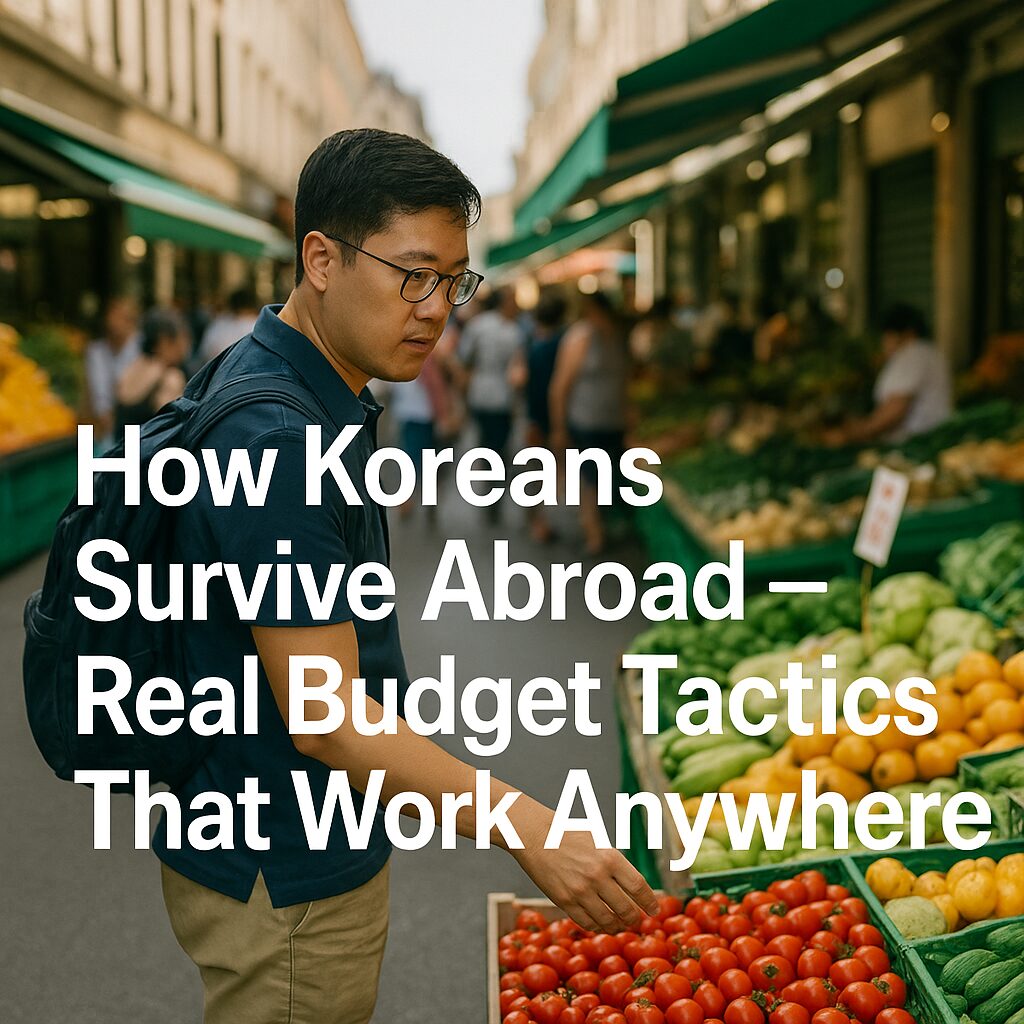Many foreigners visiting or living in Korea are surprised to discover how easy it is to access common medications without a prescription. Unlike many Western countries where even mild painkillers require a doctor’s visit, Korea offers a wide range of over-the-counter (OTC) medicines at affordable prices and with minimal hassle. This guide explores what foreigners can legally buy from Korean pharmacies without a prescription, how to ask for them in English, what to avoid, and how to stay safe when self-medicating.
1. How Korean Pharmacies Work
In Korea, pharmacies are everywhere — near subway stations, in local neighborhoods, and next to hospitals. The green “약” (yak, meaning medicine) sign makes them easy to spot. Most pharmacies are operated by licensed pharmacists who can provide basic consultations and recommend appropriate OTC options.
There are two major differences in how pharmacies work in Korea:
- Some drugs that require prescriptions in Western countries are sold OTC in Korea.
- Korean pharmacists often act as gatekeepers, deciding what they’re willing to sell based on symptoms.
Understanding this system can save you time, money, and even a trip to the doctor.
2. Top Medications You Can Buy Without a Prescription
Here are the most commonly purchased categories and examples of OTC drugs in Korea:
A. Pain & Fever Relief
- Tylenol (타이레놀) – Most popular acetaminophen brand.
- Ezn6 or Panpyrin (판피린) – Cold relief with painkillers and antihistamines.
- Ibuprofen (이부프로펜) – Brands like Brufen or Advil equivalents.
B. Cold & Flu
- Panpyrin Q or L – Korea’s go-to remedy for flu symptoms.
- Codeine-based combinations – Codemol and similar, sold at pharmacist discretion.
- NAC & expectorants – Good for mucus and chest congestion.
C. Digestive Aids
- Loperamide (지사제) – Anti-diarrhea, same as Imodium.
- Stomach powder packets – “Hapyojeongtong-san” or gas relief blends.
- Lactase enzymes – For lactose-intolerant travelers.
D. Allergy Medications
- Loratadine (로라타딘), Fexofenadine (훼록신) – Non-drowsy antihistamines.
- Chlorpheniramine (클로르페니라민) – Older-generation antihistamines.
E. Skin & Eye Care
- Hydrocortisone creams – Mild steroids for bites and rashes.
- Artificial tears – Available without restrictions.
- Antifungal creams – For athlete’s foot and skin infections.
3. Real Pharmacy Visit Example
Imagine you’re in Seoul and experiencing cold symptoms. You walk into a pharmacy in Gangnam.
You say:
“Hi, do you have anything for a sore throat and cough?”
Pharmacist replies in basic English:
“Yes, this is good for cold. One powder, three times a day.”
(He hands you a Korean packet labeled “판피린큐”.)
You pay about ₩3,000 (~$2.50 USD) and leave. No ID, no hassle, and advice included.
Useful Tip: Showing Google Translate text or pictures of your medication helps. Most pharmacists will recognize common brand names like Tylenol or Claritin.
4. What You CANNOT Buy Without a Prescription
Some medicines are tightly controlled:
- Antibiotics – Always require a doctor’s prescription.
- High-dose codeine, sleeping pills – Not available OTC.
- Anxiety medication – Prescription only.
- Some hormonal drugs (e.g. birth control) – Partially restricted.
5. Most Foreigners Don’t Know This
Q: Can I get prescription meds sent from abroad?
A: Yes, but customs may seize them. It’s safer to visit a local clinic and get a prescription.
Q: Are Korean OTC meds weaker than Western brands?
A: Not necessarily. Some combinations are even stronger — just ask the pharmacist.
Q: Are generics available?
A: Yes. Ask for “generic” or say “싸고 똑같은 약 있어요?” (Is there a cheaper version?)
6. Where to Find English-Friendly Pharmacies
In major cities, the following areas usually have English-speaking pharmacists:
- Seoul: Itaewon, Gangnam, Hongdae, Myeongdong
- Busan: Haeundae, Seomyeon
- Jeju: Jeju City and tourist spots
Large chains like Olive Young Drugstore, Daewon Pharmacy, or 24-hour hospital-based pharmacies often have signage in English.
7. When to Visit a Doctor Instead
If symptoms last over 3 days or worsen (high fever, persistent pain, dizziness), go to a clinic. Korea has affordable walk-in clinics:
- Approx. ₩10,000–20,000 ($8–$15 USD) for consultation.
- Clinics near subway stations often accept walk-ins and some travel insurance.
8. Bonus: Top 5 Meds Foreigners Keep Buying Again
- Panpyrin Q – Cold & flu lifesaver.
- Tylenol 500mg – Trusted pain relief.
- Loratadine – For seasonal allergies.
- Hydrocortisone cream – Itchy bites.
- Digestive powder packets – After spicy meals or soju night.
9. Final Tips
- Take a photo of your medication label in case you need it again.
- Always clarify dosage with the pharmacist.
- Avoid mixing meds without asking.
- Don’t hesitate to ask, even in broken English — pharmacists will try to help.
Korean pharmacies are surprisingly open and efficient for foreigners — a major travel bonus. If you know what’s available, what’s not, and how to ask, you’ll be able to take care of small health issues without stress. Use this flexibility responsibly, and enjoy your stay in Korea.
📌 Coming Up Next:
Top 5 Korean Supplements That Foreigners Actually Buy (And Reorder)
We’ll cover what’s actually working, where to find these supplements, and why digital nomads and frequent travelers keep coming back for more.
Go to full article →
















